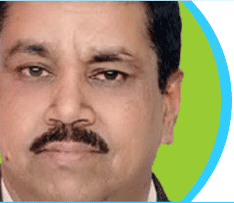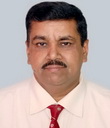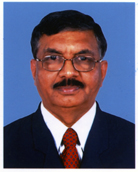Amyotrophic Lateral Sclerosis ALS / Motor Neuron Disease MND and Homeopathy
ALS / MND is a Life Shortening, rapidly progressive, invariably fatal neurological disease that attacks the nerve cells (neurons) responsible for controlling voluntary muscles. It is characterized by the gradual degeneration and death of motor neurons.
Motor neurons are like controlling units, nerve cells located in the brain, brainstem, and spinal cord that serve and vital communication links between the nervous system and the voluntary muscles of the body.
Messages from motor neurons in the brain (called upper motor neurons) are transmitted to motor neurons in the spinal cord (called lower motor neurons) and from them to particular muscles. In ALS, both the upper motor neurons and the lower motor neurons degenerate and subsequently die, thus ceasing to send messages to muscles.
Muscle when unable to function, gradually weaken, waste away and twitch. Eventually, the ability of the brain to start and control voluntary movements is lost.
The brain is linked to the rest of the body by nerves (neurons) which have been likened to electrical wiring; some carry impulses to the brain (the sensory nerves) while others carry messages from the brain to the muscles, to make the muscles work and contract - these are called the motor nerves or neurones. In MND these motor nerves degenerate, (especially the myelin sheath covering the axons), so that the muscles supplied by them lose their strength.
As many as 40,000 to 50,000 people in the world have MND, and an estimated 7,000 people are diagnosed with the disease each year.
The illness is not infectious and normally affects people over 40 years of age although younger cases are also recently being reported.
The disease will present in different ways depending on the location of the nerve cells involved. Doctors commonly use four main terms for Motor Neuron Disease but there is considerable overlap among the three forms as the disease progresses.
It must be stressed that MND affects individual people differently and not everyone will have all the symptoms. The rate of progression of the disease will also be individual to each person affected.
The motor neurone diseases (MND) are a group of progressive neurological disorders that destroy motor neurones, the cells that control voluntary muscle activity including speaking, walking, breathing, swallowing and general movement of the body. Some people also experience changes to their thinking, behaviour and emotions. MND affects everyone differently.
MND usually begins affecting a single limb or aspect of motor function, become more generalized as the disease progresses. There is usually evidence of wasting and weakness in some muscles and twitching (fasciculation) of parts of the muscle may be visible under the skin.
Fasciculation is a sign of damage to lower motor neurons. Involvement of upper motor neurons results in stiffness of muscles (spasticity) and slowed movements; sometimes the muscles will spasm or spontaneously jerk. Patients may have only lower motor neuron or only upper motor neuron signs early in the illness but typically develop a combination of the two as the disease progresses.
Forms of motor neurone disease
MND usually begins affecting a single limb or aspect of motor function, become more generalized as the disease progresses. There is usually evidence of wasting and weakness in some muscles and twitching (fasciculation) of parts of the muscle may be visible under the skin.
Fasciculation is a sign of damage to lower motor neurons. Involvement of upper motor neurons results in stiffness of muscles (spasticity) and slowed movements; sometimes the muscles will spasm or spontaneously jerk. Patients may have only lower motor neuron or only upper motor neuron signs early in the illness but typically develop a combination of the two as the disease progresses.
Classification
The disease will present in different ways depending on the location of the nerve cells involved. Doctors commonly use four main terms for Motor Neuron Disease but there is considerable overlap among the three forms as the disease progresses.
It must be stressed that MND affects individual people differently and not everyone will have all the symptoms. The rate of progression of the disease will also be individual to each person affected.
Motor neuron diseases affect either upper motor neurons (UMN)
or lower motor neurons (LMN), or both:
Type UMN degeneration LMN degeneration
Amyotrophic lateral sclerosis(ALS) Yes Yes
Progressive muscular atrophy(PMA) No Yes
Progressive bulbar palsy (PBP) No Yes, bulbar region
Primary lateral sclerosis (PLS) Yes No
Pseudobulbar palsy Yes, bulbar region No
Hereditary spastic paraparesis (HSP) Yes Yes
- Amyotrophic lateral sclerosis (ALS) is the most common form, characterized by muscle weakness and stiffness, over-active reflexes and rapidly changing emotions. Upper and lower motor neurons are both affected; the limbs cease to work properly. ALS is the term most commonly applied to MND in the USA, where it is also known as Lou Gehrig's disease, after a famous baseball player.
- Progressive muscular atrophy (PMA) is characterized by muscle wasting and weakness, loss of weight and muscle-twitching, and is caused by damage to the spinal (lower) motor neurons.
- Progressive bulbar palsy (PBP) mixed bulbar palsy and pseudo-bulbar palsy are forms that involve the muscles of speech and swallowing. The nerves that control these functions are located in the bulb (the lower part of the brain), hence the term bulbar palsy (paralysis).
- Primary lateral sclerosis, in which upper motor neuron damage results in stiffness and spastic paralysis of the limbs. This a very rare form of the disease.
- Pseudobulbar Palsy is a medical condition characterized by the inability to control facial movements (such as chewing and speaking) and caused by a variety of neurological disorders. Patients experience difficulty chewing and swallowing, have increased reflexes and spasticity in tongue and the bulbar region, and demonstrate slurred speech (which is often the initial presentation of the disorder), sometimes also demonstrating uncontrolled emotional outbursts.
- Hereditary Spastic Paraparesis (HSP) or the Strümpell-Lorrain syndrome is the name given to a heterogeneous group of inherited disorders in which the main clinical feature is progressive lower limb spasticity
What is not affected?
MND does not affect the senses (touch, taste, sight, smell, and hearing) and the sense of feeling in the affected limbs remains normal. Intellect and memory are not usually affected although in a very few individuals some deterioration may be experienced. Bladder and bowel function remain normal, so incontinence is not a feature; however, immobility may disturb bowel and bladder function later in the illness.
Sexual desire and function are not directly affected. The person with Motor Neuron Disease is, and will often be fully in control of his or her intellectual faculties, feelings and emotions. Although the affected person may not be able to communicate easily to the attendants as the disease advances, it is important to take account of this and to allow time for slower methods of communication, such as electronic equipment, to enable the person to make decisions for himself or herself.
Causes
There is no known established cause of MND. Genetic and Environmental factors are suspected to be important in determining an individual's susceptibility to disease,
Is it hereditary?
Most cases of MND occur spontaneously. They are said to be sporadic - meaning occurring in scattered or isolated instances without clearly identifiable causes. Some cases of MND are hereditary, with 5-10% been shown to have a genetic link. In March 1993, mutations were identified on the superoxide dismutase (SOD1) gene on chromosome 21. Recently NEK 1 Gene is found to be related with MND. These mutations are believed to be present in about 20% of the hereditary form of MND.
Signs and symptoms
Symptoms usually present themselves between the ages of 40-70, and include progressive weakness, muscle wasting, and muscle fasciculations, spasticity or stiffness in the arms and legs, and overactive tendon reflexes. Patients may present with symptoms as diverse as a dragging foot, unilateral muscle wasting in the hands, or slurred speech.
Diagnosis
The diagnosis of MND is a clinical one, established by a neurologist on the basis of history and neurological examination. There is no specific diagnostic test for MND. Investigations such as blood tests, Electromyography (EMG), Nerve Conduction Velocity (NCV), Magnetic Resonance Imaging (MRI), Transcranial Magnetic Stimulation (TMS), Lung Function Test (LFT) and sometimes genetic testing are useful to rule out other disorders like Kenedy's Disease, Hirayama Disease, Myasthenia Gravis etc. that may mimic MND. However, the diagnosis of MND remains a clinical one. Having excluded other diseases like a relatively rapid progression of symptoms is a strong diagnostic factor.
Treatment
HOMOEOPATHY - VERY EFFECTIVE
Homeopathic Approach has been very beneficial in dealing with such cases. We have got very good results in our clinic where the quality of life have been improved tremendously. Fasciculation, Muscular coordination in spasticity has been restored in general patients have been able to get up and move about also after Homoeopathic treatment.
Currently there is no established cure for MND / ALS. The only drugs that affects the course of the disease are Arnica, Curare, Causticum, etc. (Homeopathic Medicines), Riluzole, Edaravone Injections (Allopathy Medicines), The allopathy drugs function by blocking the effects of the neurotransmitter glutamate, and is thought to extend the lifespan of an MND / ALS patient by only a few months but has many intolerable side effects in some patients. Other medicines like Ayurvedic Massage Oils, Stem Cell Therapy, Physiotherapy, Accupressure, Accupuncture, Tibetan Medicine claim to produce slowing effects but are not on record till date. While the Homeopathic medicines mentioned above are found to be more effective in lowering the momentum of the disease, to either slow it down to a standstill or at least delay the progress of the disease.
Also it is very important to note that MND is a rare disease which affects your nerve conduction / transmission. Following this denervation starts and the body muscles start wasting. The patient has to go through regular massage sometimes two times a day or active physiotherapy constantly to slowdown / stop this denervation. The current Homeopathic medicines cause the denervating nerves to develop 'sprouting' as a continuation to the process of reinnervation and the muscle starts recovering, at the same time the new wonderful liquid Homeopathic medicine is known to heal the demyelination, thus conduction gets restored which is a very good sign. This being a very tedious process takes a lot of time.
Since MND does a lot of damage to your body, it does disfigure the patient and disable them of doing the most private things. That's why it is very important to make them happy and keep encouraging them so as to minimize the chances of depression.
Current medical science doesn't have any full proof answer to MND though stem cell and genetic engineering researches are going on along with the identification of TDP-45 and NEK-1 Genes. We all are aware of the power of Homeopathy and there are no side effects. In long run it has got a tremendous effect once it suits you.
Prognosis
Most cases of MND progress quite slowly, with noticeable decline occurring over the course of months. Although symptoms may present in one region, they typically spread. If restricted to one side of the body they are more likely to progress to the same region on the other side of the body (Symetrical progression) before progressing to a new region. After several years, most patients require help to carry out activities of daily living such as self care, feeding, and transportation.
MND is typically fatal within 2-5 years. Around 50% die within 14 months of diagnosis. The remaining 50% will not necessarily die within the next 14 months as the distribution is significantly skewed. As a rough estimate, 1 in 5 patients survive for 5 years, and 1 in 10 patients survive 10 years. Professor Stephen Hawking was a well-known example of a person with MND, and survived for more than 55 years with the disease.
Mortality normally results when control of the diaphragm is impaired and the ability to breathe is lost. One exception is PLS, which may last for upwards of 25 years. Given the typical age of onset, this effectively leaves most PLS patients with a normal life span. PLS can progress to ALS, decades later.
Epidemiology
The incidence of MND is approximately 1–5 out of 100,000 people. Men have a slightly higher incidence rate than women. Approximately 5,600 cases are diagnosed in the U.S. every year. By far the greatest risk factor is age, with symptoms typically presenting between the ages of 50-70. Cases under the age of 50 years are called "young onset MND", whilst incidence rates appear to tail off after the age of 85.
Tentative environmental risk factors identified so far include: exposure to severe electrical shock leading to coma, having had a major accident / fall in life, playing football (soccer). However, these findings have not been firmly identified and more research is needed.
There are three "hot spots" of MND in the world. One is in the Kii peninsula of Japan, second amongst a tribal population in Papua New Guinea. Third in Chamorro inhabitants from the island of Guam in the Pacific Ocean have an increased risk of developing a form of MND.
Research efforts
Lot of research is undergoing in Homeopathy and other systems of medicine the world over, the search for a drug that will slow MND progression is under way. Agents that are currently with promosing trials include Arnica, Causticum, Curare, Oxytropis, Agaricus and others.
Current medical science doesn't have any full proof answer to MND though stem cell researches are going on. We all are aware of the power of Homeopathy and there are no side effects. In long run it has got a tremendous effect over MND / ALS once it suits you.
























